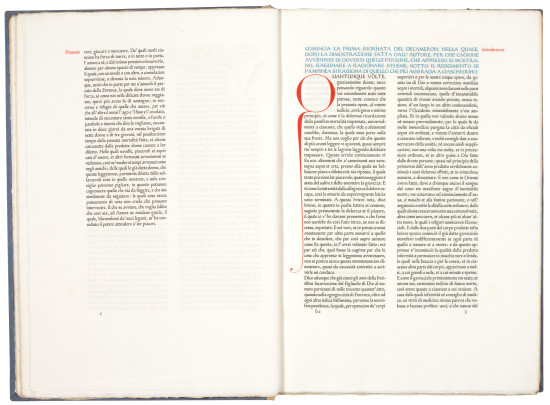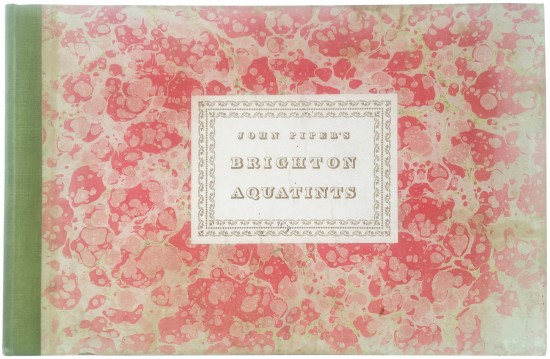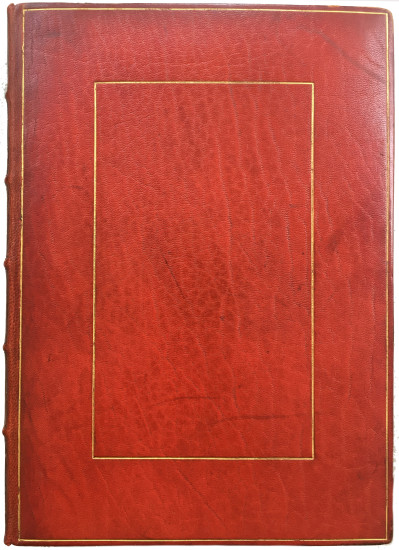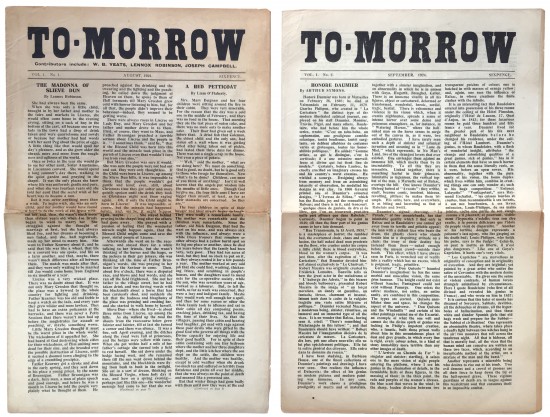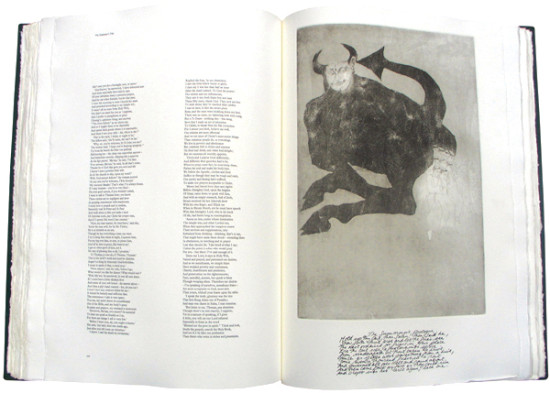The Faerie Queen Disposed Into Twelve Bookes Fashioning XII. Morall Vertues
Ashendene Press. Spenser, Edmund
Shelley House, Chelsea. The Ashendene Press. 1923
The beautiful Ashendene 'Faerie Queen'.
From the edition limited to 180 copies on Batchelor paper of which 150 were for sale; 12 copies on vellum were also issued.
This copy with the publication announcement (the first state according to Franklin without the text 'these are already sold' adjacent to the listing of the vellum copies) and the order form for the book, both in red and black recto only on leaves of Batchelor paper (c.206 x 144 mm ) matching that for the book; the copies on paper were available at 16 Guineas, those on vellum at 105.
Edmund Spenser (1552/3- 1599) intended his magnum opus, the long, allegorical poem 'The Faerie Queene' to be an epic in twelve books (as per the title) but concluded only six (although two cantos and a section of a third were also written). Written in his eponymous Spenserian stanzas of iambic pentameter with a concluding line in iambic hexameter the poem is one of the most influential of English literature inspiring Milton, Byron, Blake, Keats and others.
This large folio was, as noted in St John Hornby's bibliography, printed 'on Batchelor paper of a larger size than any hitherto used'. The volume includes the exhortatory ' An humble Prayer of the Printer to the future Binders of this volume' hoping that 'the Binders of the future' shall 'spare the knife and leave the edges, ash he hopes they may find them, unmutilated'.
[Ashendene XXXII].
From the edition limited to 180 copies on Batchelor paper of which 150 were for sale; 12 copies on vellum were also issued.
This copy with the publication announcement (the first state according to Franklin without the text 'these are already sold' adjacent to the listing of the vellum copies) and the order form for the book, both in red and black recto only on leaves of Batchelor paper (c.206 x 144 mm ) matching that for the book; the copies on paper were available at 16 Guineas, those on vellum at 105.
Edmund Spenser (1552/3- 1599) intended his magnum opus, the long, allegorical poem 'The Faerie Queene' to be an epic in twelve books (as per the title) but concluded only six (although two cantos and a section of a third were also written). Written in his eponymous Spenserian stanzas of iambic pentameter with a concluding line in iambic hexameter the poem is one of the most influential of English literature inspiring Milton, Byron, Blake, Keats and others.
This large folio was, as noted in St John Hornby's bibliography, printed 'on Batchelor paper of a larger size than any hitherto used'. The volume includes the exhortatory ' An humble Prayer of the Printer to the future Binders of this volume' hoping that 'the Binders of the future' shall 'spare the knife and leave the edges, ash he hopes they may find them, unmutilated'.
[Ashendene XXXII].
pp. (i), (ii), 406, (i); Folio. (438 x 314 mm). Leaf with title, leaf with contents, leaf with Spenser's 'A Letter of the Authors ... ', three leaves with 'Commendatory Verses' concluding with Spenser's dedication to Elizabeth I and 'The First Booke' to 'The Sixte Booke' plus 'Two Cantos of Mutabilitie' in double columns, final leaf with colophon with printer's mark in red, register and 'An humble Prayer of the Printer to the future Binders of this volume', printed text in Subiaco type in red and black throughout with marginal notes in red and occasional interpolations in blue, 4- , 5- and 7-line initials in red or blue throughout. Original brown half morocco over wooden boards and 7 raised bands with gilt lettered spine, signed by W. H. Smith.
#48582
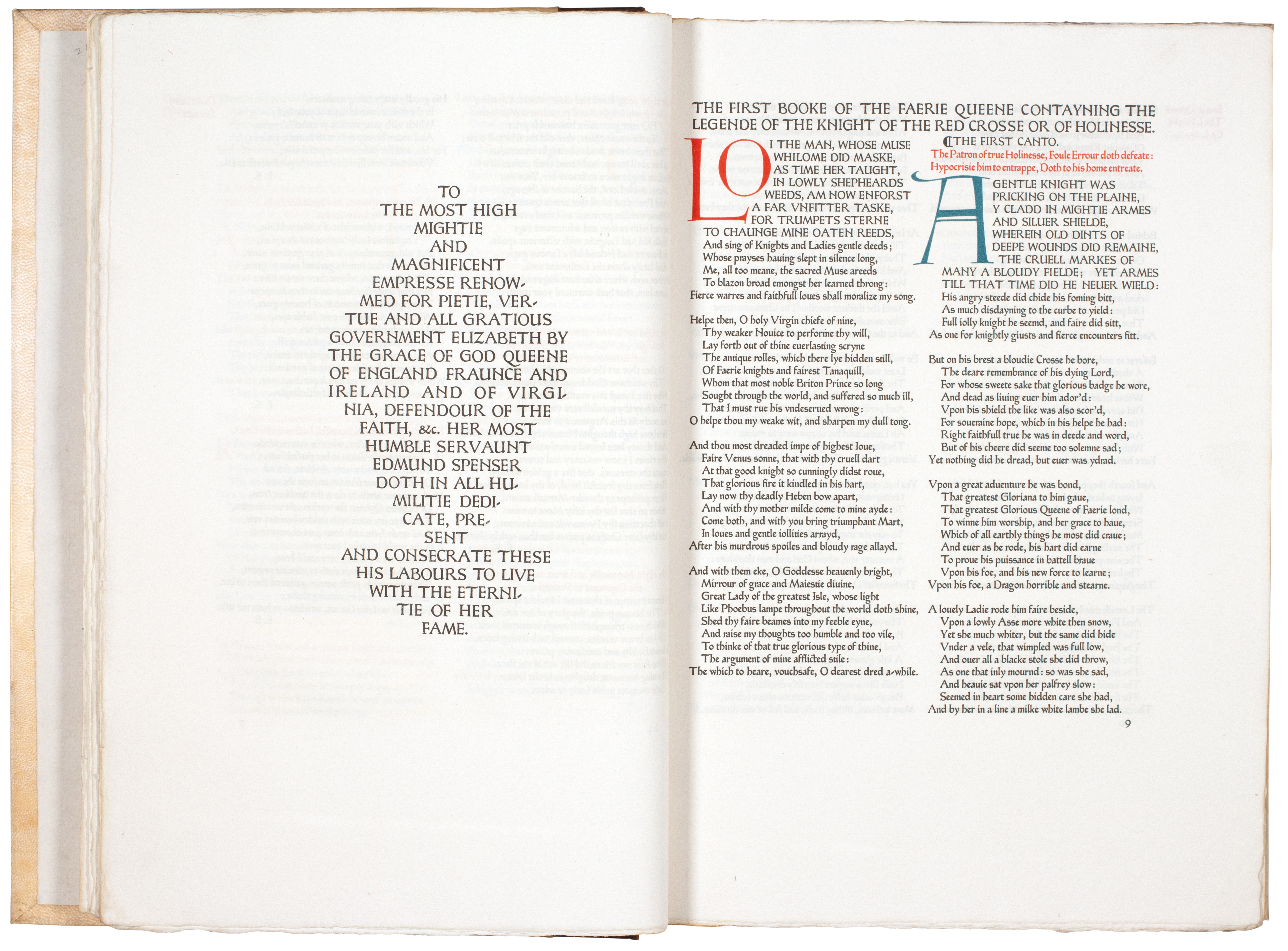
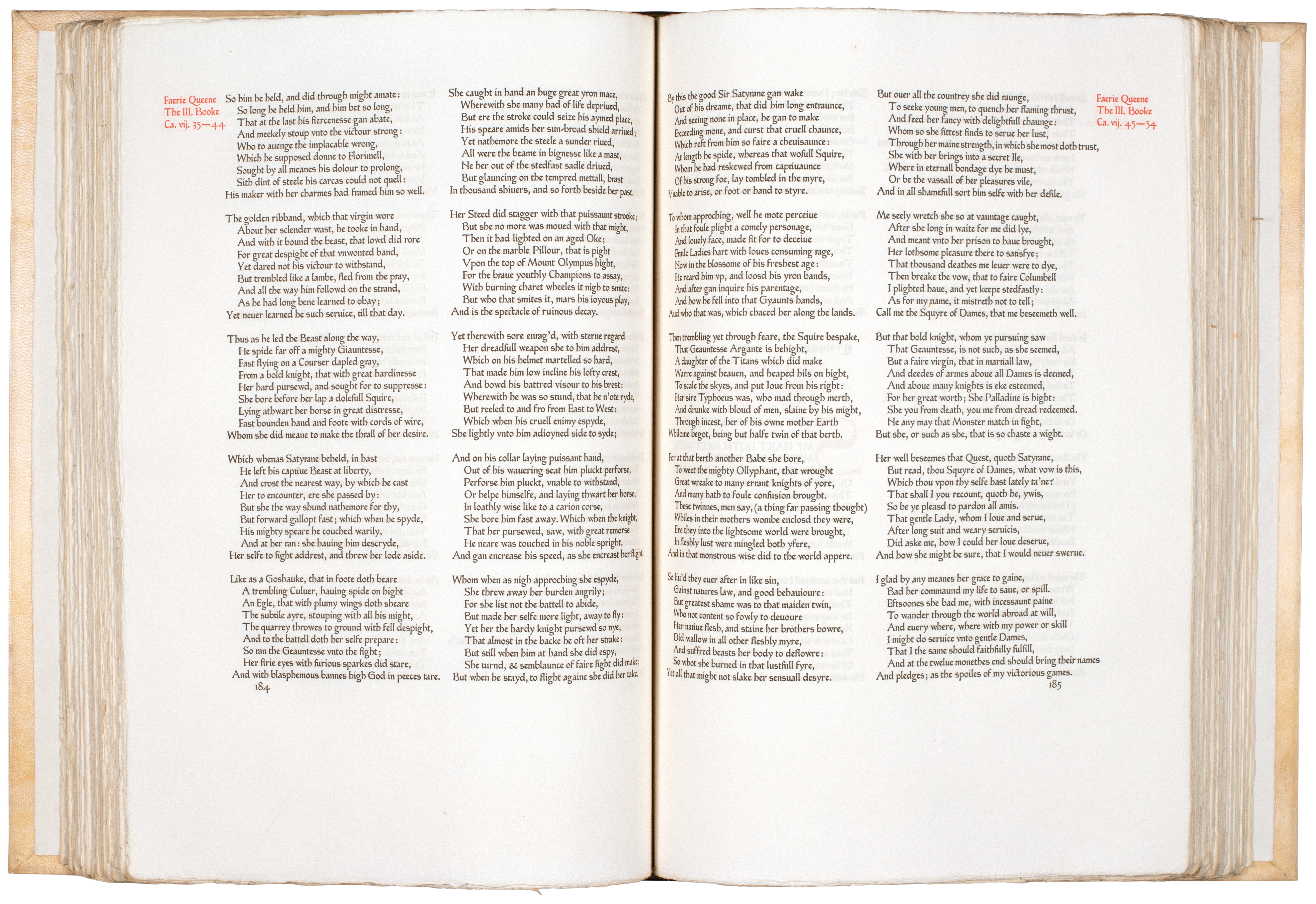
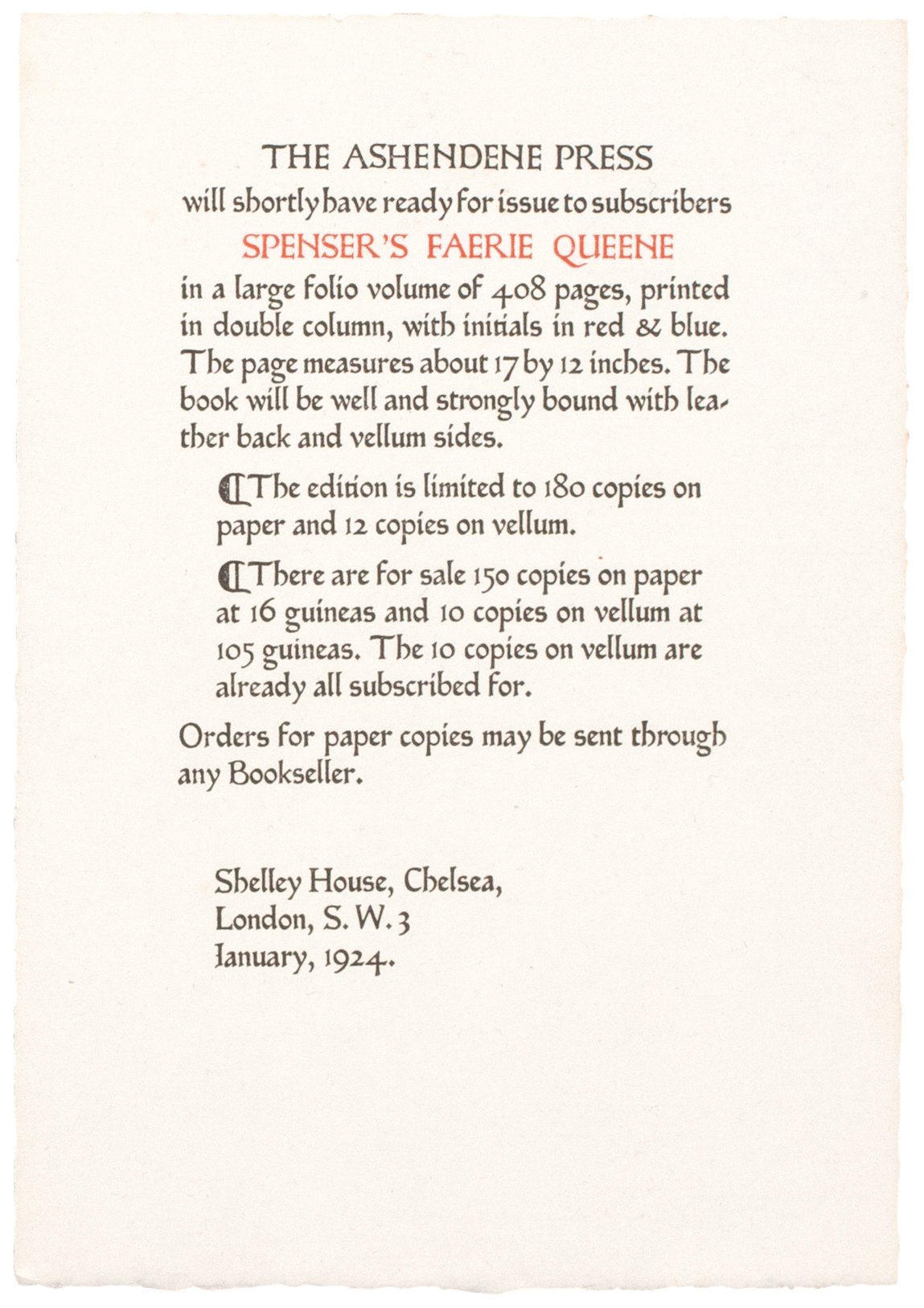

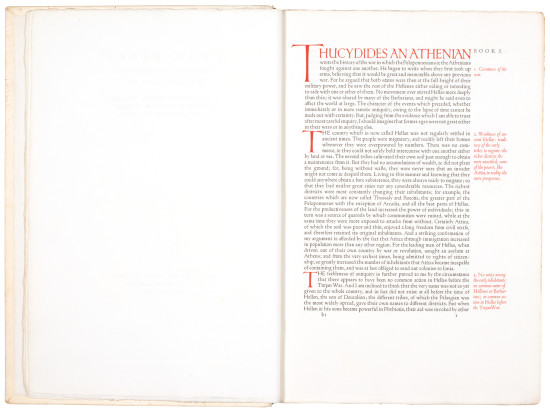
![The First [- Second] Part of...](https://media.books.simsreed.com/img/stockimages/sized/48583.jpg)
